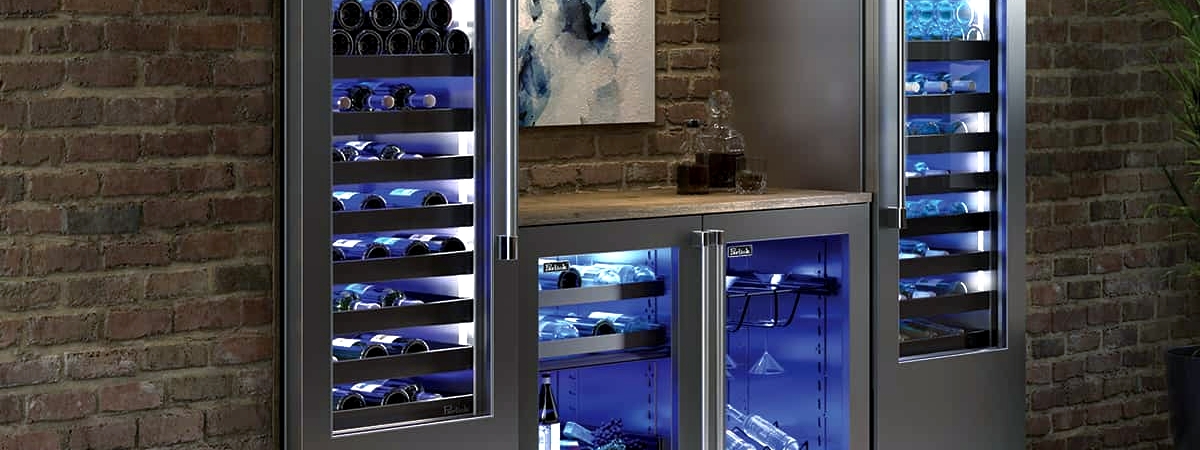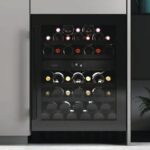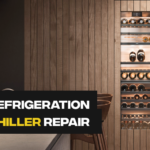Perlick Wine Cooler Condensation Inside the Cooler
Post Date: June 28, 2024

Perlick wine coolers are renowned for their ability to maintain precise temperature and humidity levels, creating an ideal environment for preserving your prized wine collection. However, like any appliance, they can sometimes experience issues that affect their performance and appearance. One common problem is condensation buildup inside the cooler, which can lead to several concerns, including:
-
Mold and Mildew Growth: Excess moisture provides a favorable environment for mold and mildew to thrive, potentially spoiling your wine and creating unpleasant odors.
-
Damage to Labels and Bottles: Condensation droplets can drip onto wine labels, causing them to smear or peel off. Additionally, prolonged exposure to moisture can damage the bottles themselves.
-
Unsightly Appearance: Excessive condensation can make the interior of the cooler look untidy and unappealing.
Understanding Condensation
Condensation is a natural phenomenon that occurs when warm, moist air comes into contact with a cooler surface. In the context of a wine cooler, condensation forms when warm, humid air from the surrounding environment enters the cooler and encounters the cooler interior walls and bottles.
Factors Contributing to Condensation
Several factors can contribute to condensation buildup in a Perlick wine cooler:
-
High Humidity Levels: If the surrounding environment has high humidity levels, more moisture will enter the cooler, increasing the likelihood of condensation.
-
Frequent Door Openings: Opening and closing the cooler door frequently introduces warm, humid air, especially in humid environments.
-
Overcrowding: Overcrowding the cooler with bottles can restrict air circulation, trapping moisture and promoting condensation.
-
Improper Ventilation: If the cooler’s vents are obstructed or the cooler is placed in an enclosed space, proper air circulation is hindered, leading to condensation buildup.
-
Door Seal Issues: A compromised door seal can allow warm, humid air to leak into the cooler, contributing to condensation.
DIY Troubleshooting Solutions
Before calling a professional technician, you can try some DIY troubleshooting steps to address condensation issues:
-
Reduce Humidity: Use a dehumidifier in the area where the wine cooler is located to lower the overall humidity levels.
-
Minimize Door Openings: Avoid opening the cooler door unnecessarily. When accessing your wine, open the door quickly and close it promptly.
-
Optimize Bottle Placement: Space bottles out evenly to allow for adequate air circulation. Avoid overcrowding the cooler.
-
Clear Vents: Ensure that the cooler’s vents are free of dust or obstructions. Clean the vents gently with a soft brush or vacuum cleaner.
-
Inspect Door Seal: Check for any gaps or tears in the door seal. If the seal is damaged, replace it with a new one from the manufacturer.
Preventive Measures for Minimizing Condensation
To minimize the risk of condensation buildup and maintain a dry environment in your Perlick wine cooler, follow these preventive measures:
-
Maintain Moderate Humidity: Keep the humidity level in the surrounding area around 50-60%.
-
Limit Door Openings: Open the cooler door only when necessary and close it promptly.
-
Proper Bottle Arrangement: Arrange bottles evenly to promote air circulation and prevent moisture pockets.
-
Regular Cleaning: Clean the interior of the cooler regularly to remove any moisture buildup.
-
Door Seal Maintenance: Inspect the door seal regularly for signs of damage and replace it if necessary.
When to Seek Professional Assistance
If you’ve tried the DIY troubleshooting steps and condensation persists, or if you suspect an underlying issue with the cooler’s cooling system, it’s advisable to contact a qualified appliance repair technician. They have the expertise and tools to diagnose the root cause of the problem, whether it’s a faulty door seal, a ventilation issue, or a more complex cooling system malfunction.
By understanding the causes of condensation, implementing DIY troubleshooting steps, and following preventive measures, you can keep your Perlick wine cooler free from excessive moisture and ensure your wine collection remains perfectly preserved in a dry and aesthetically pleasing environment.








